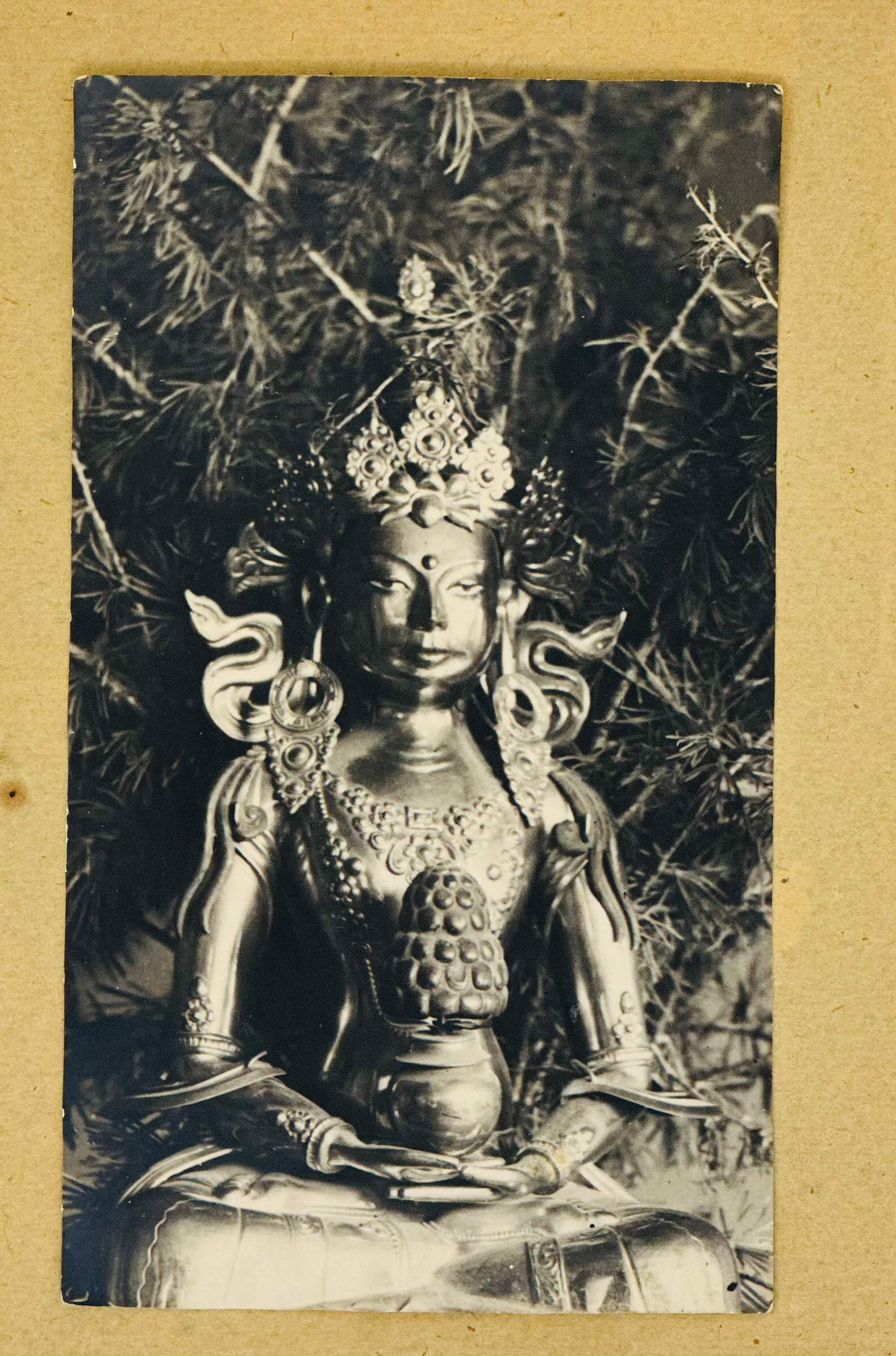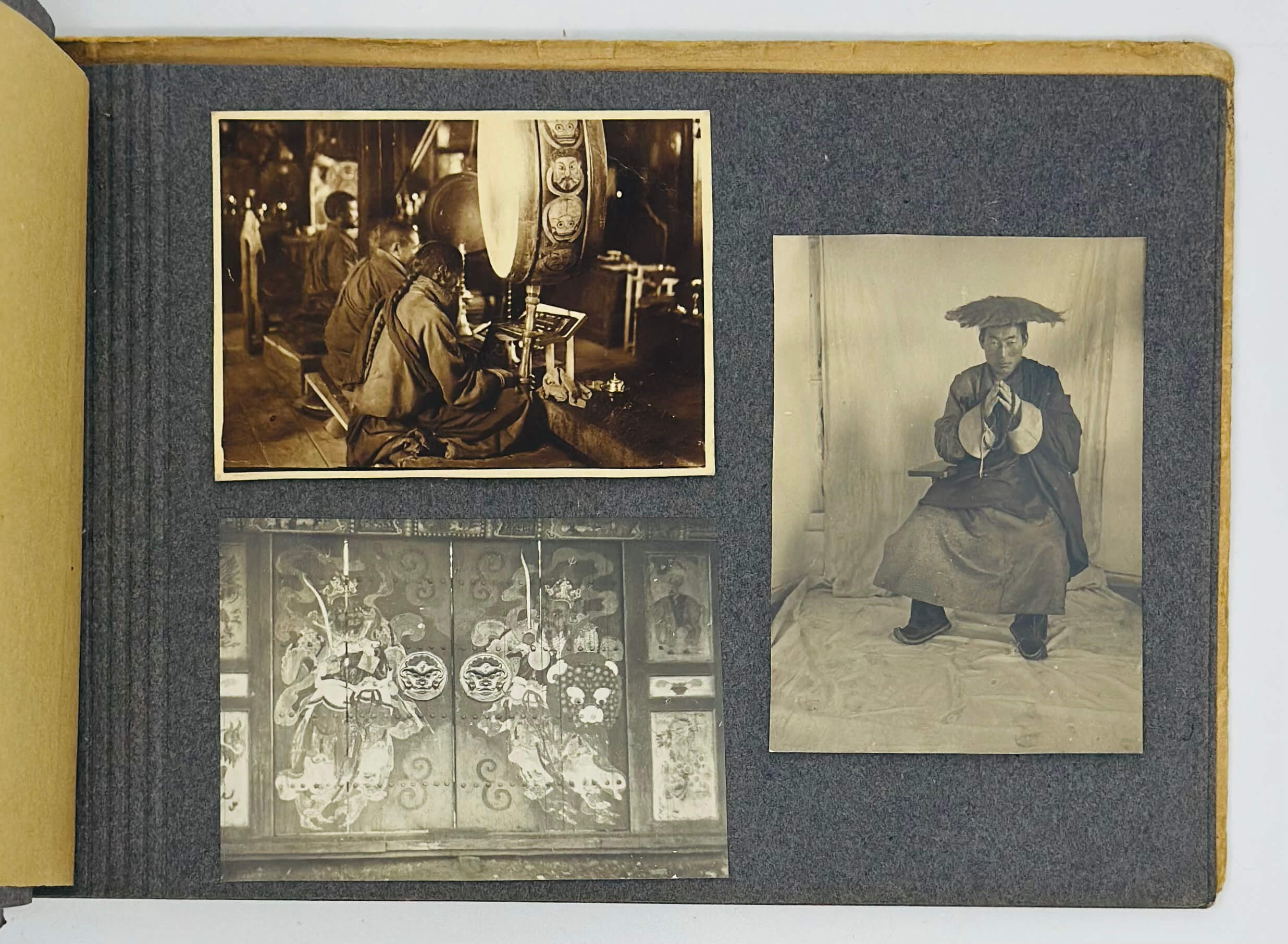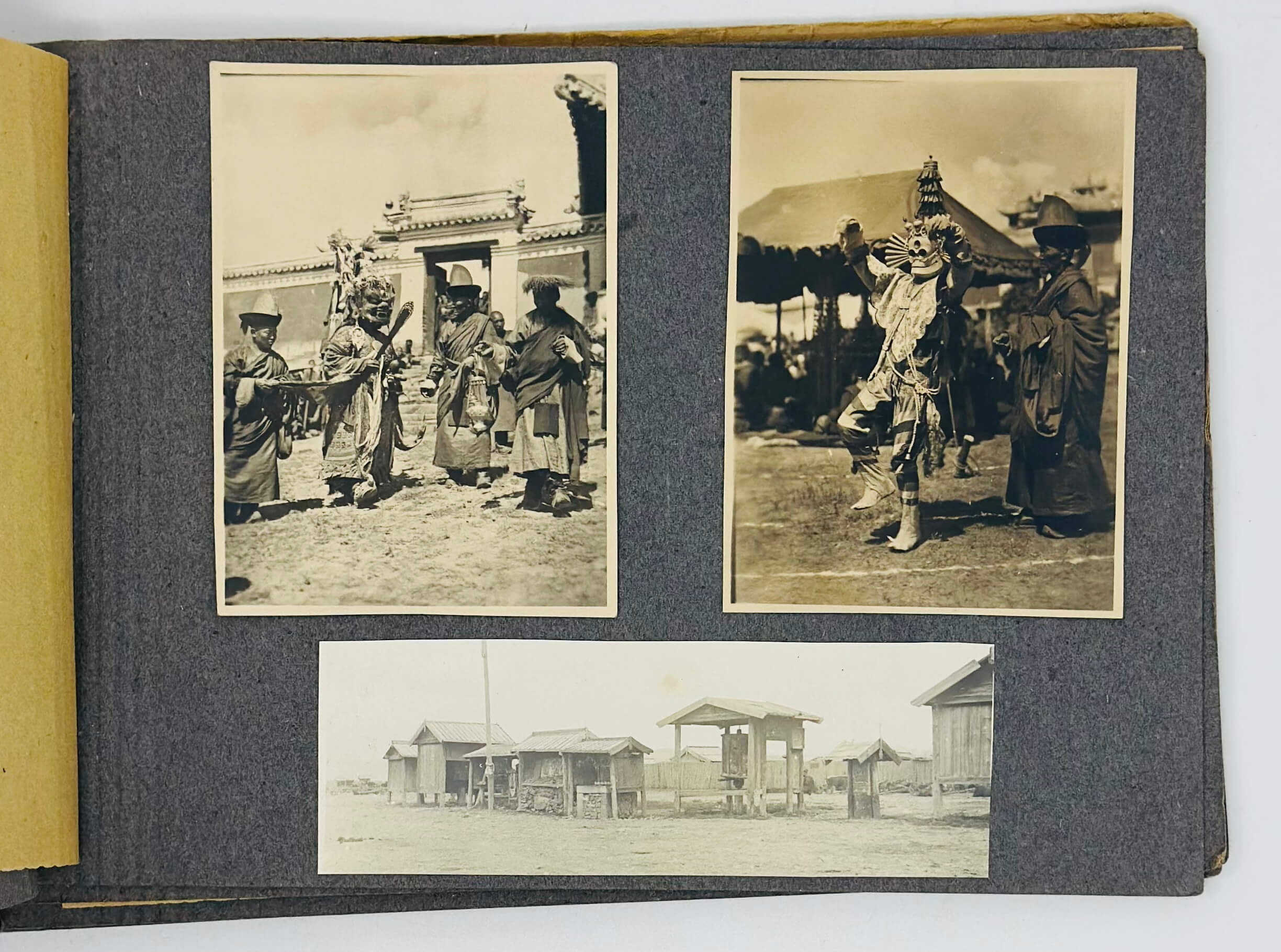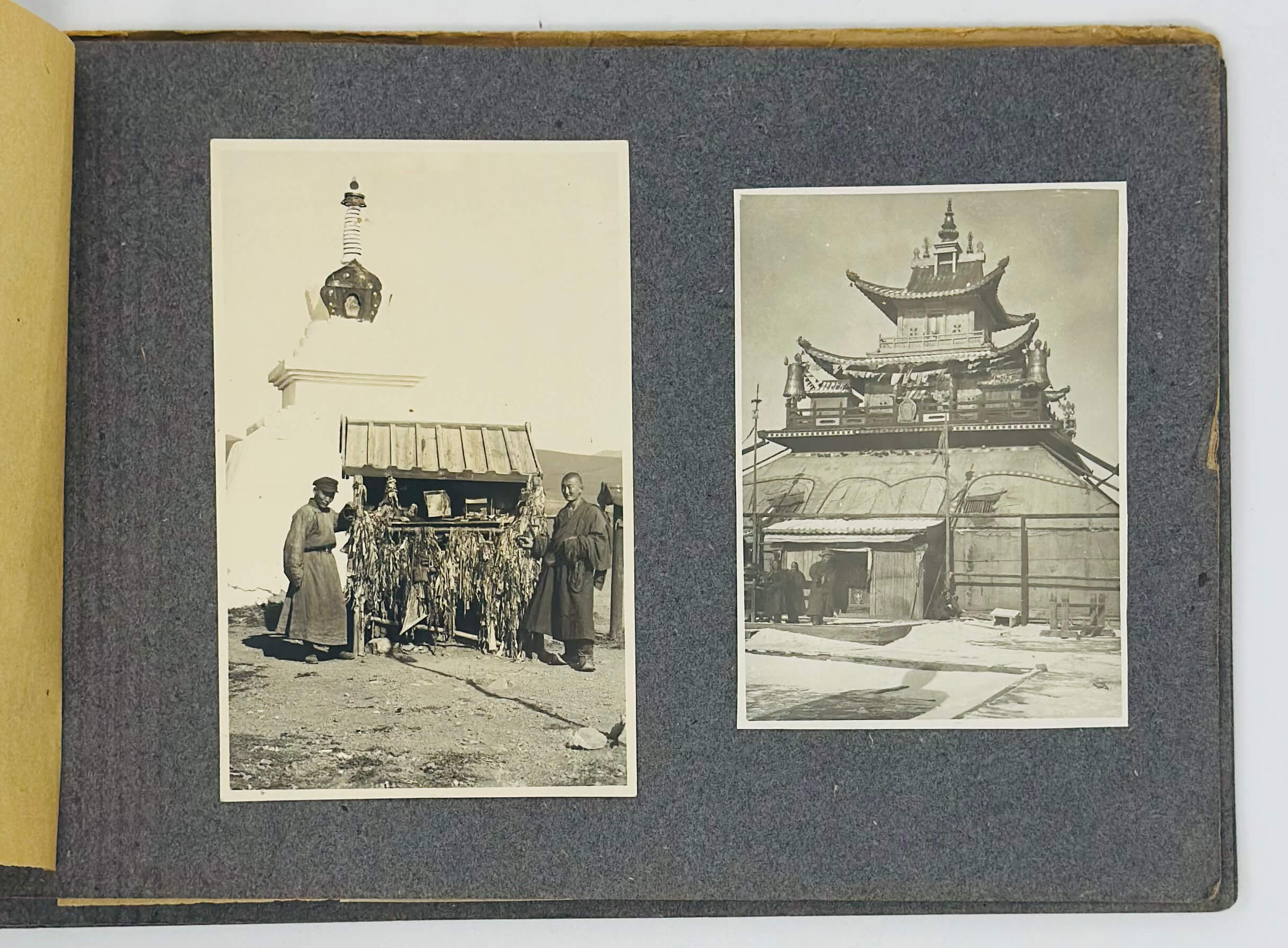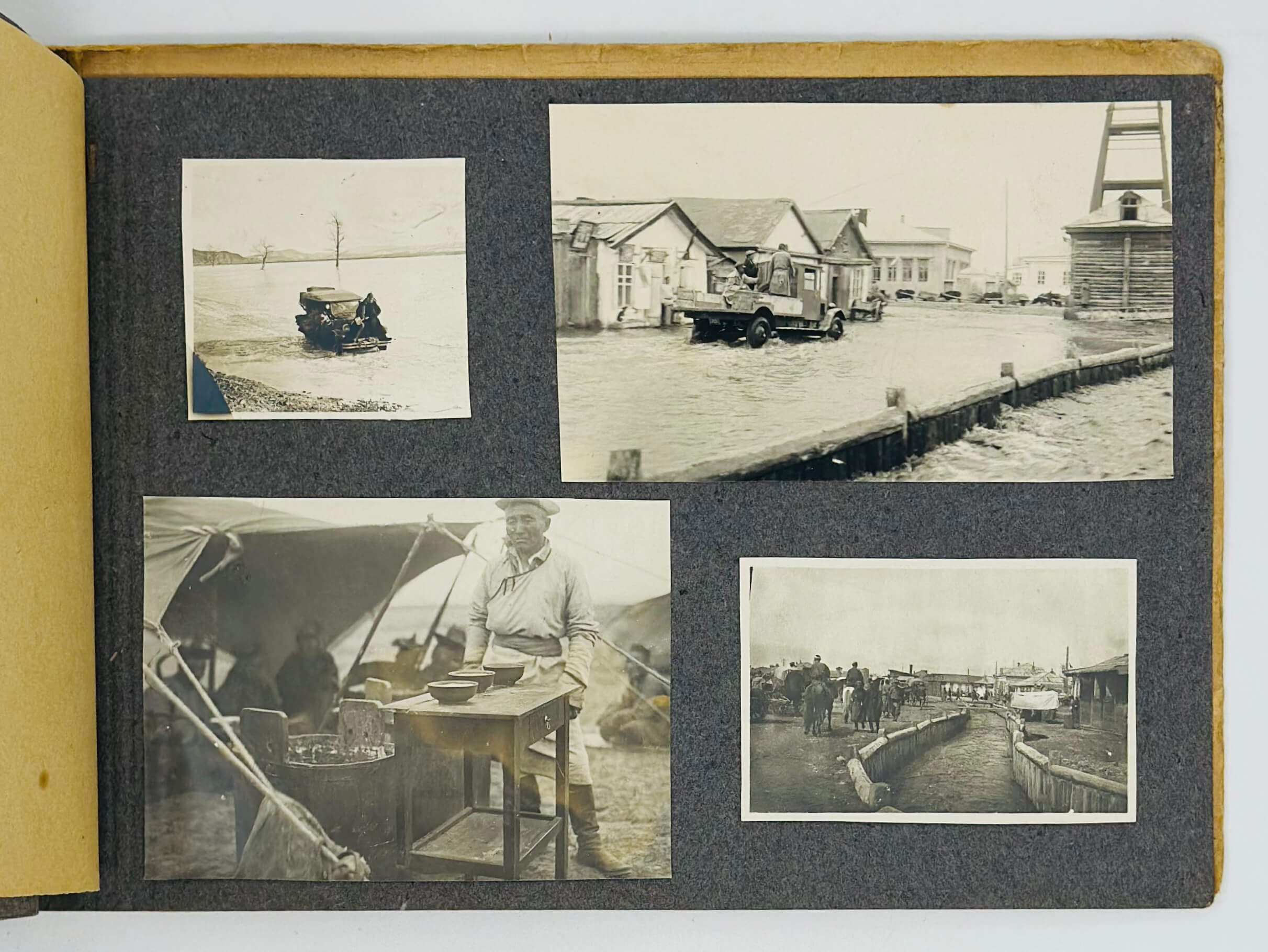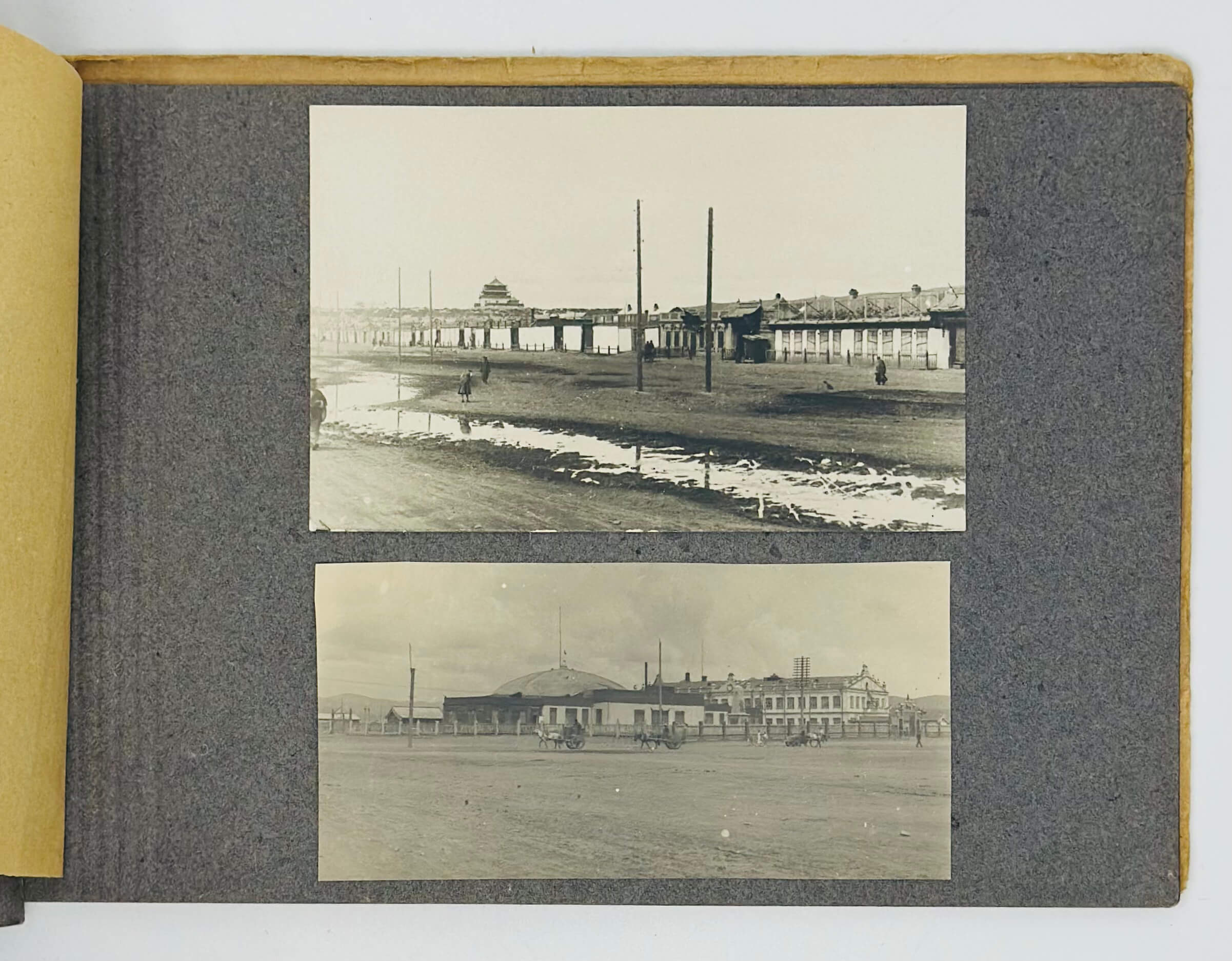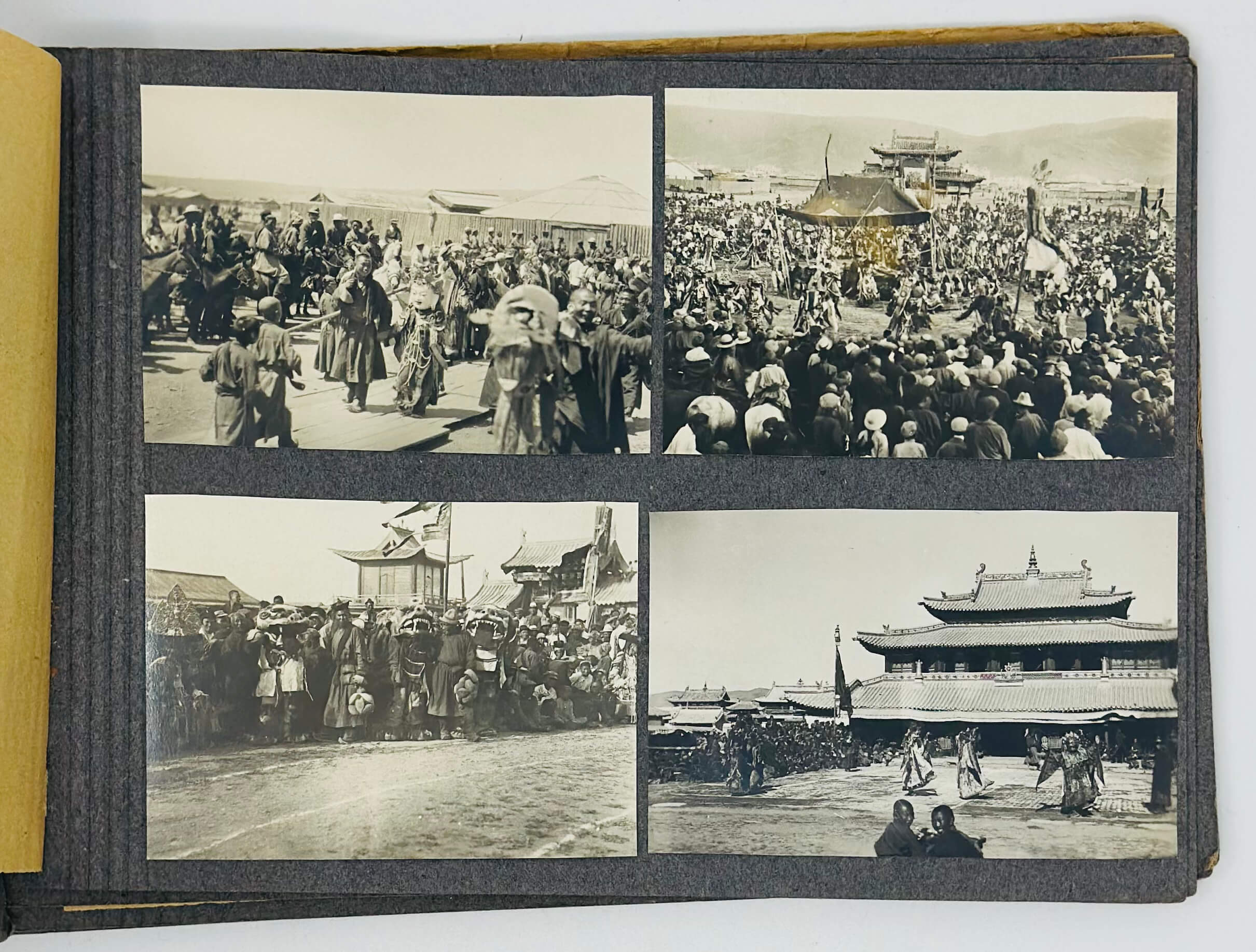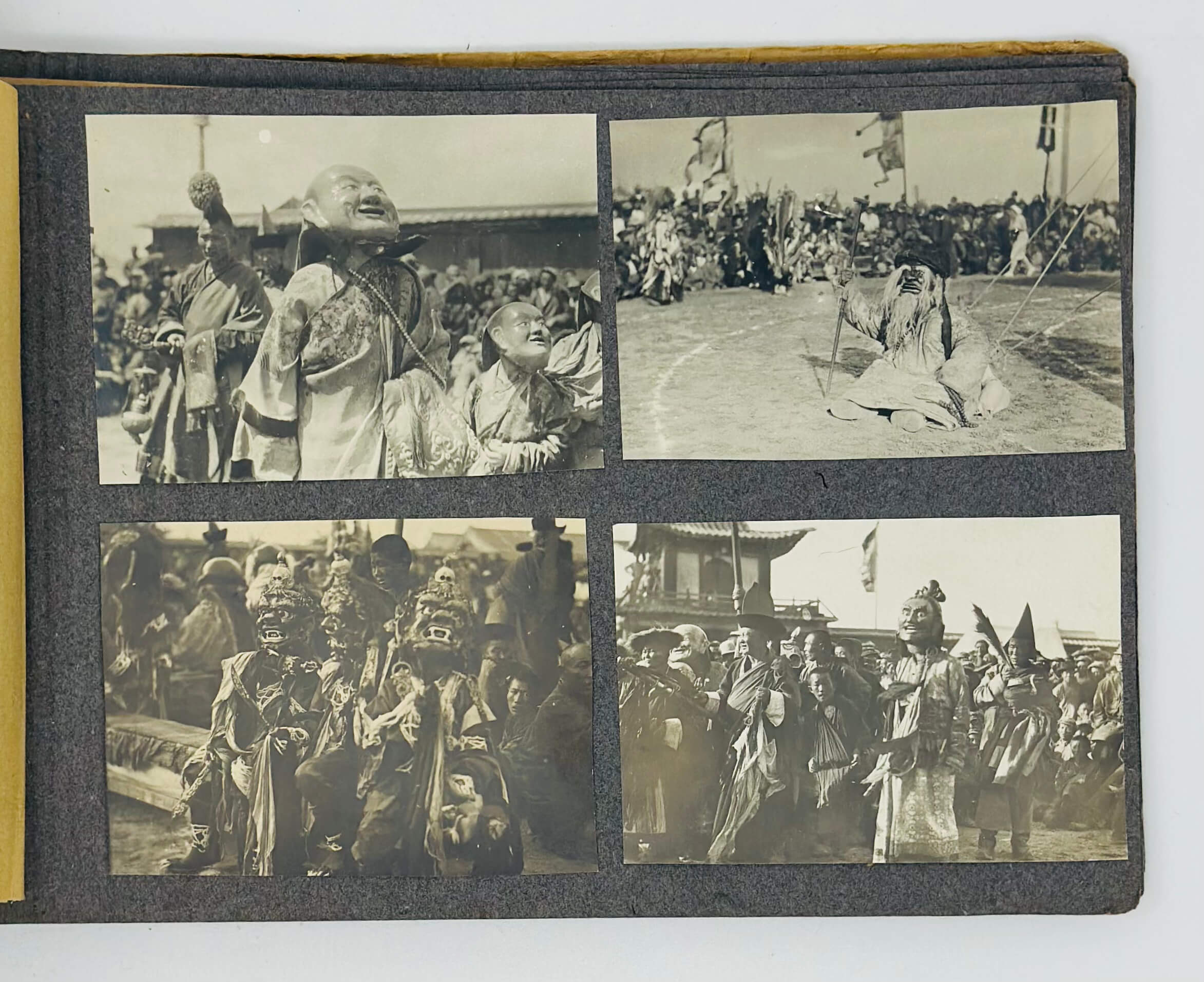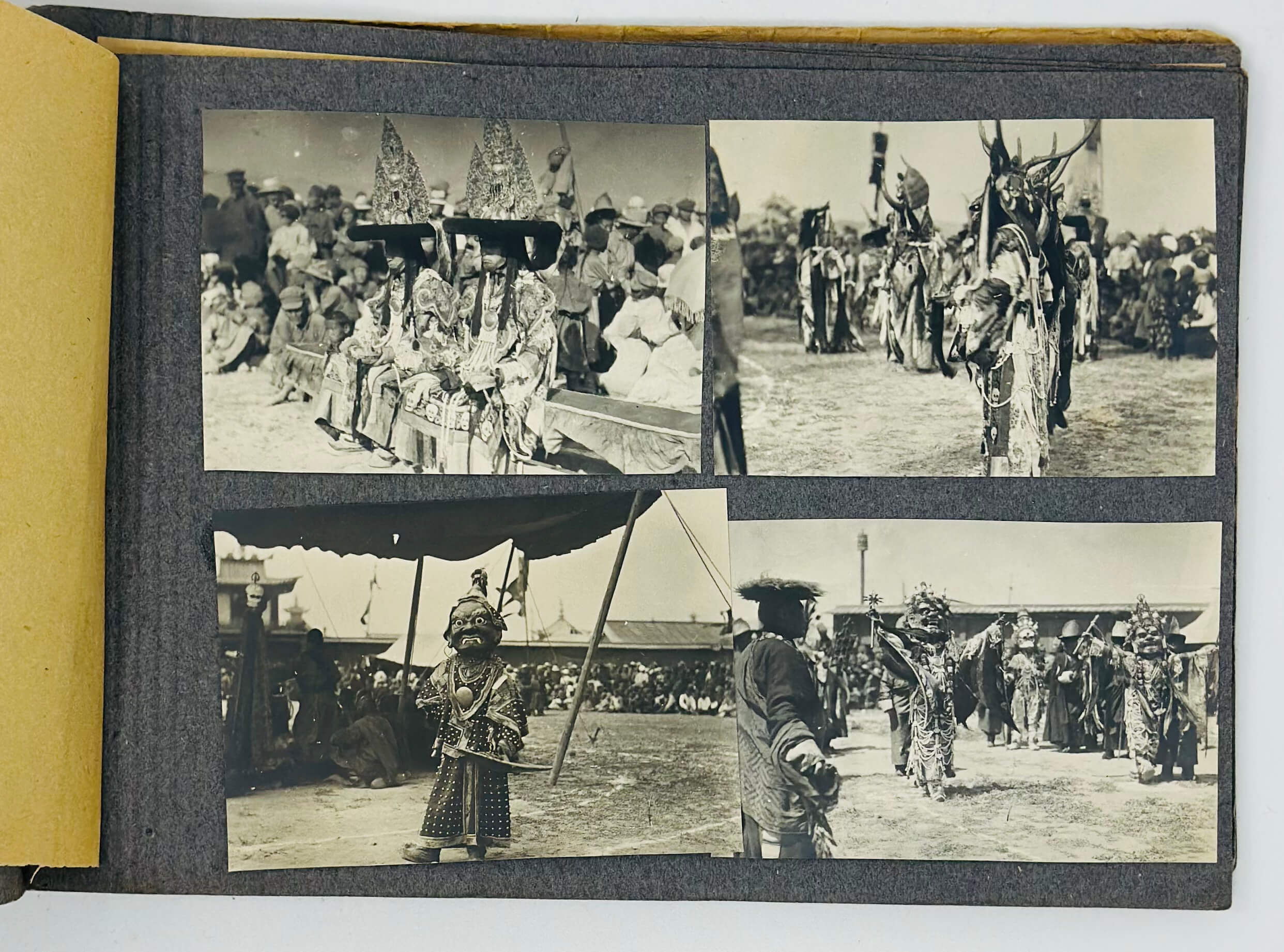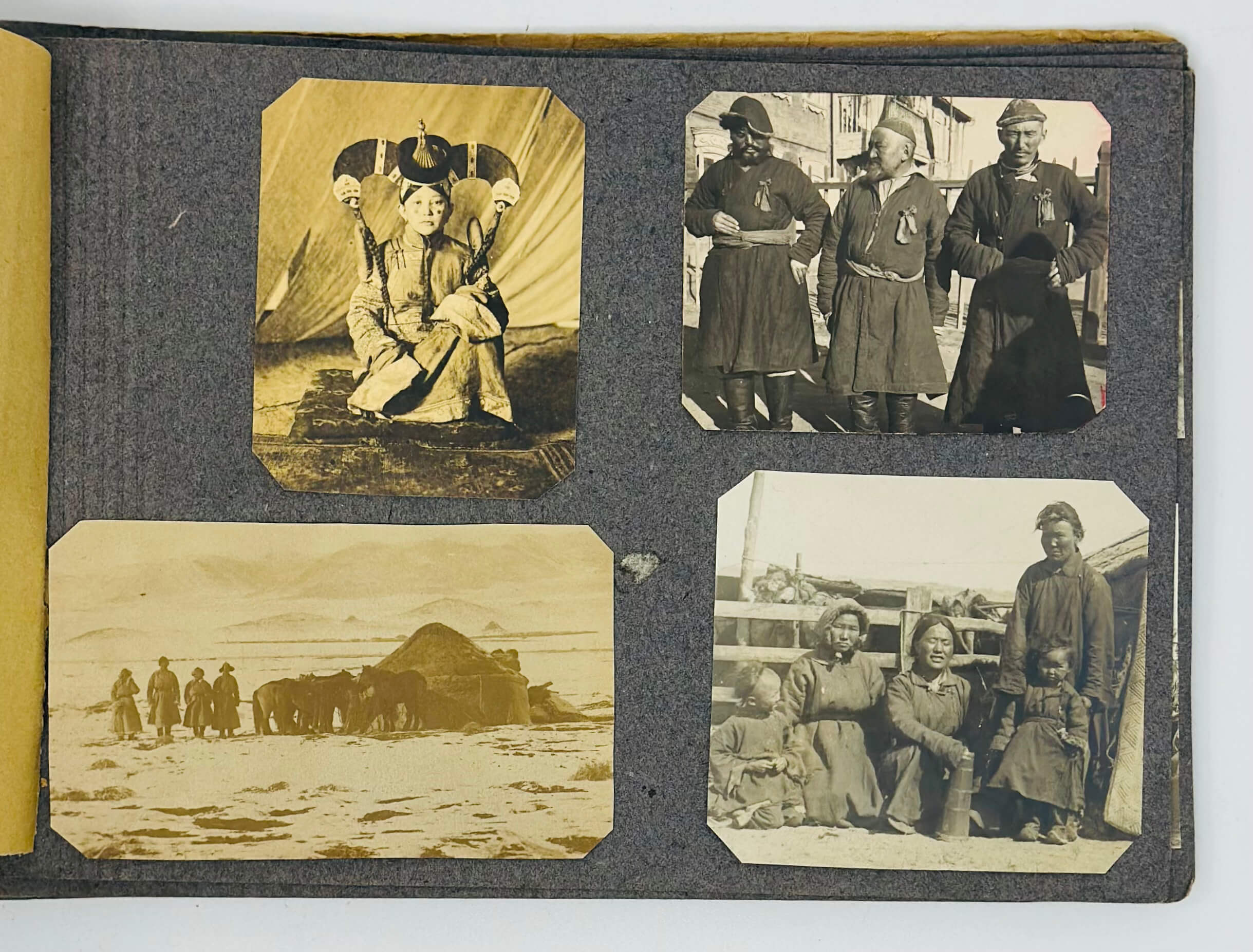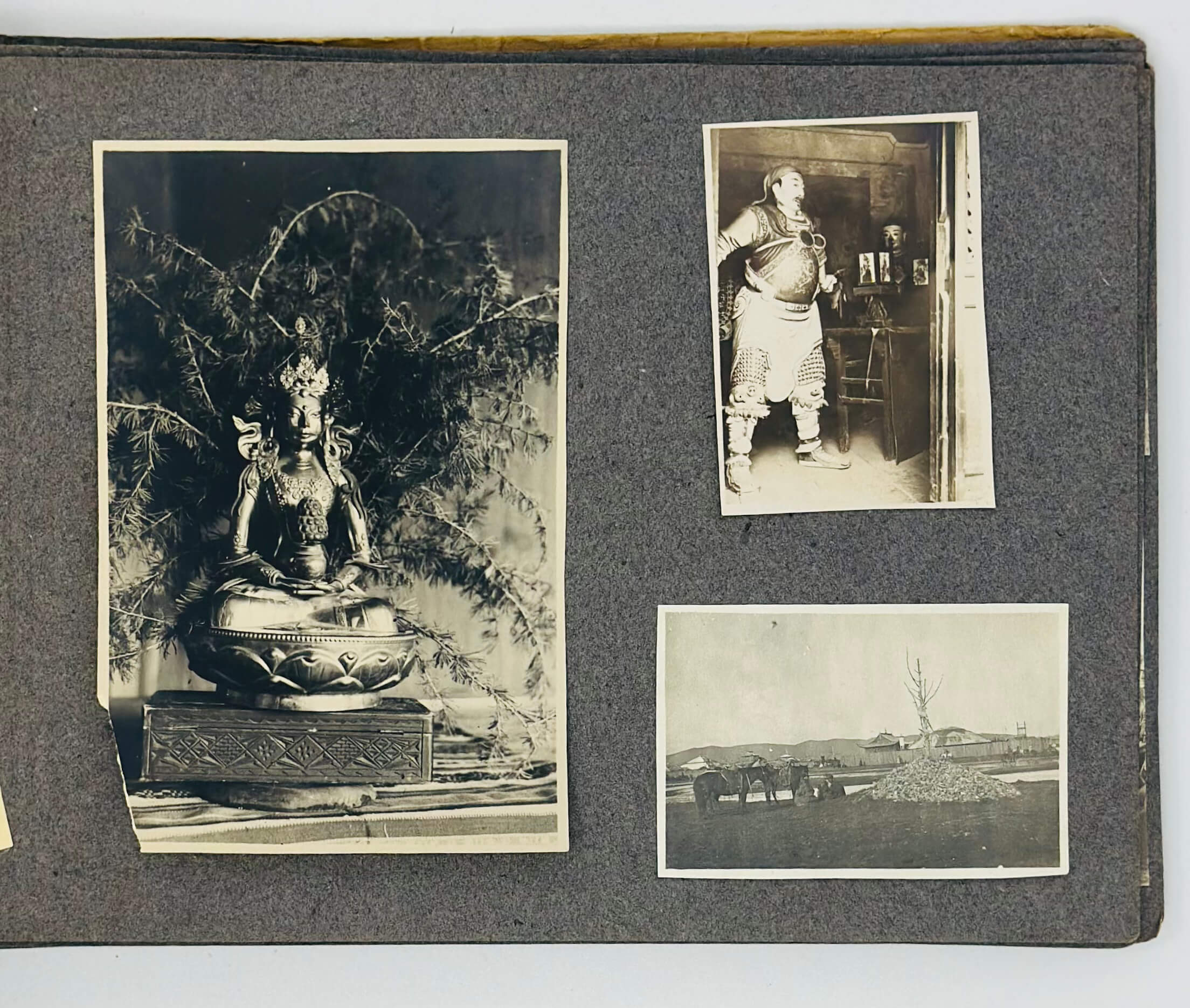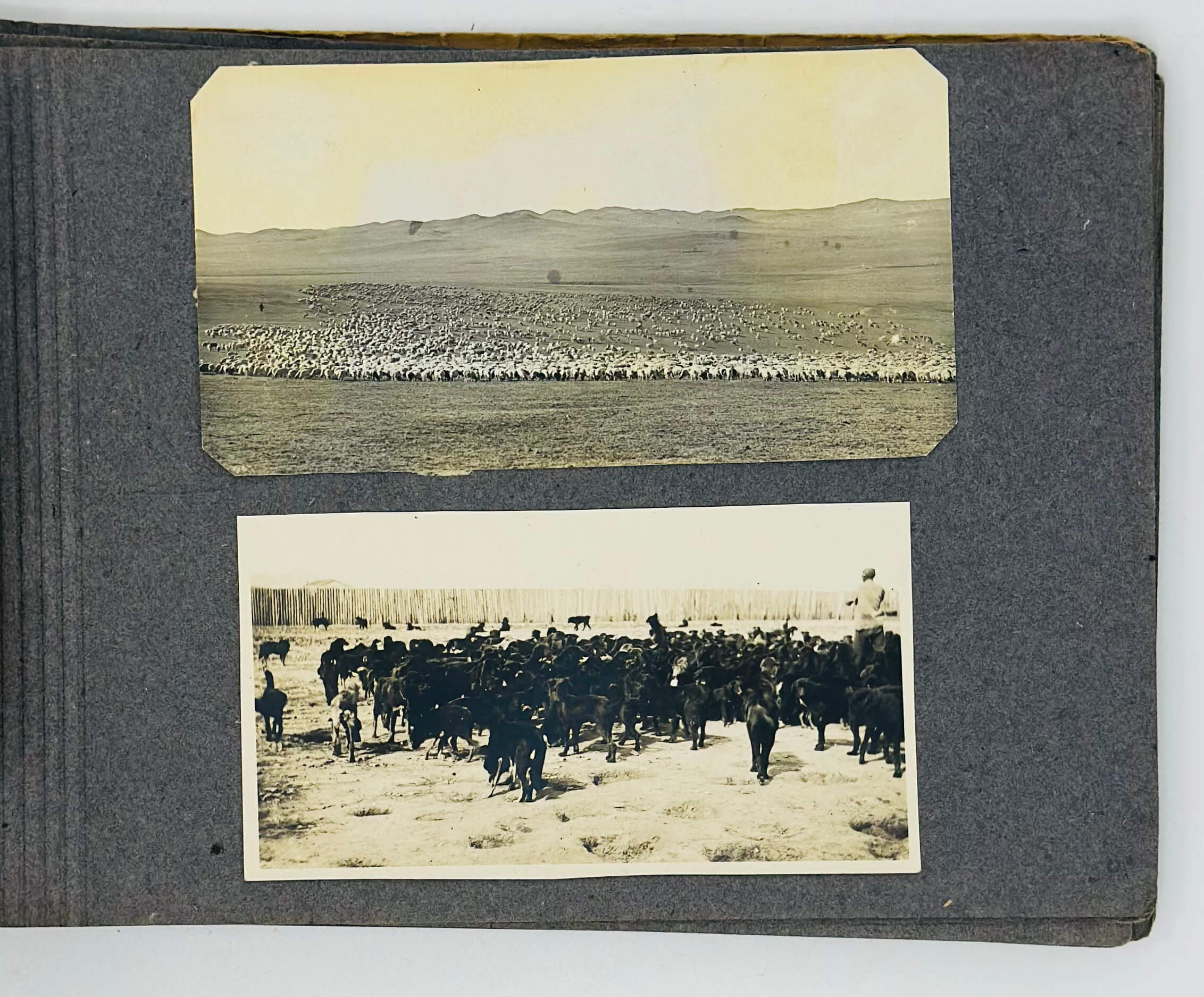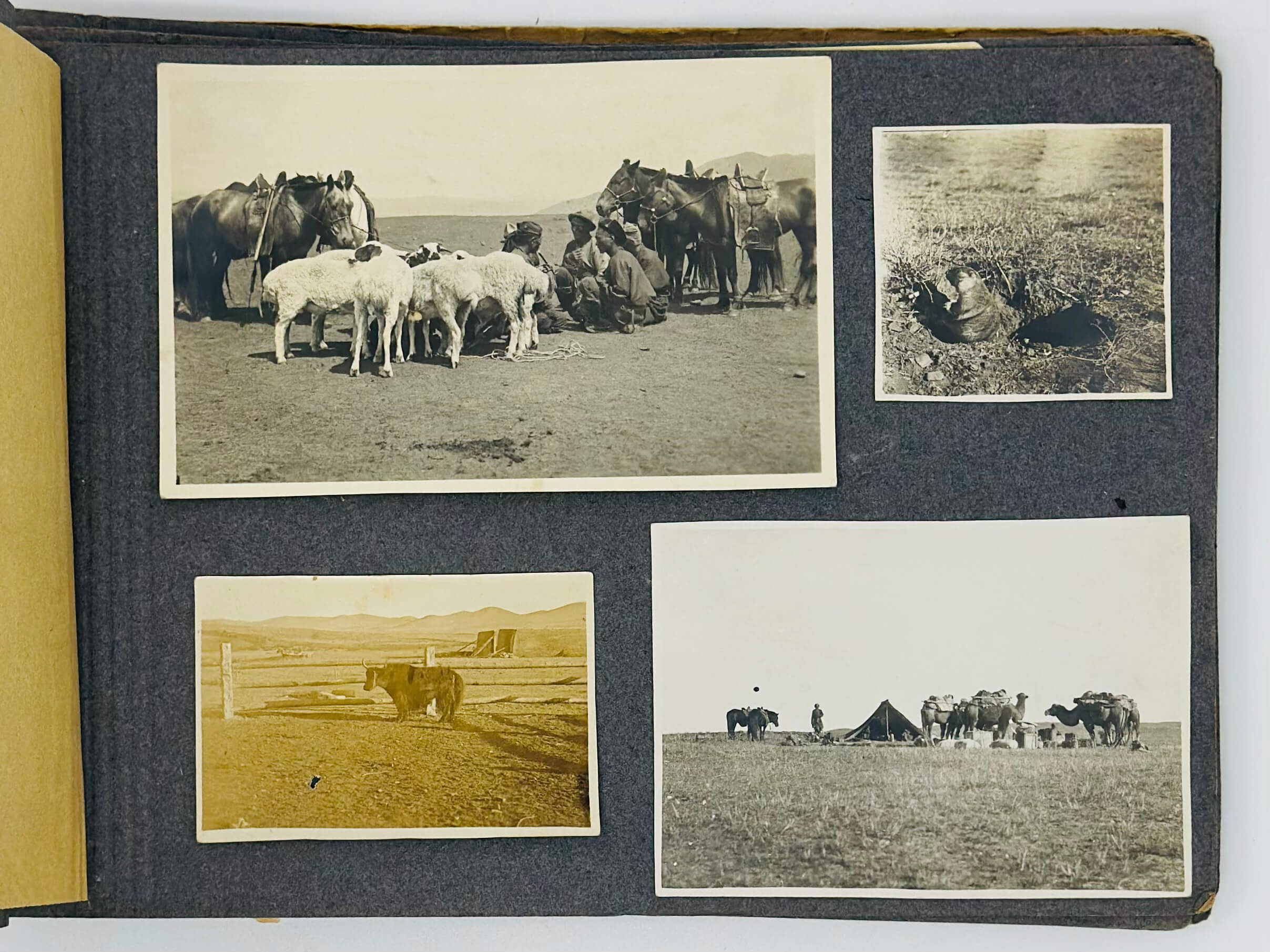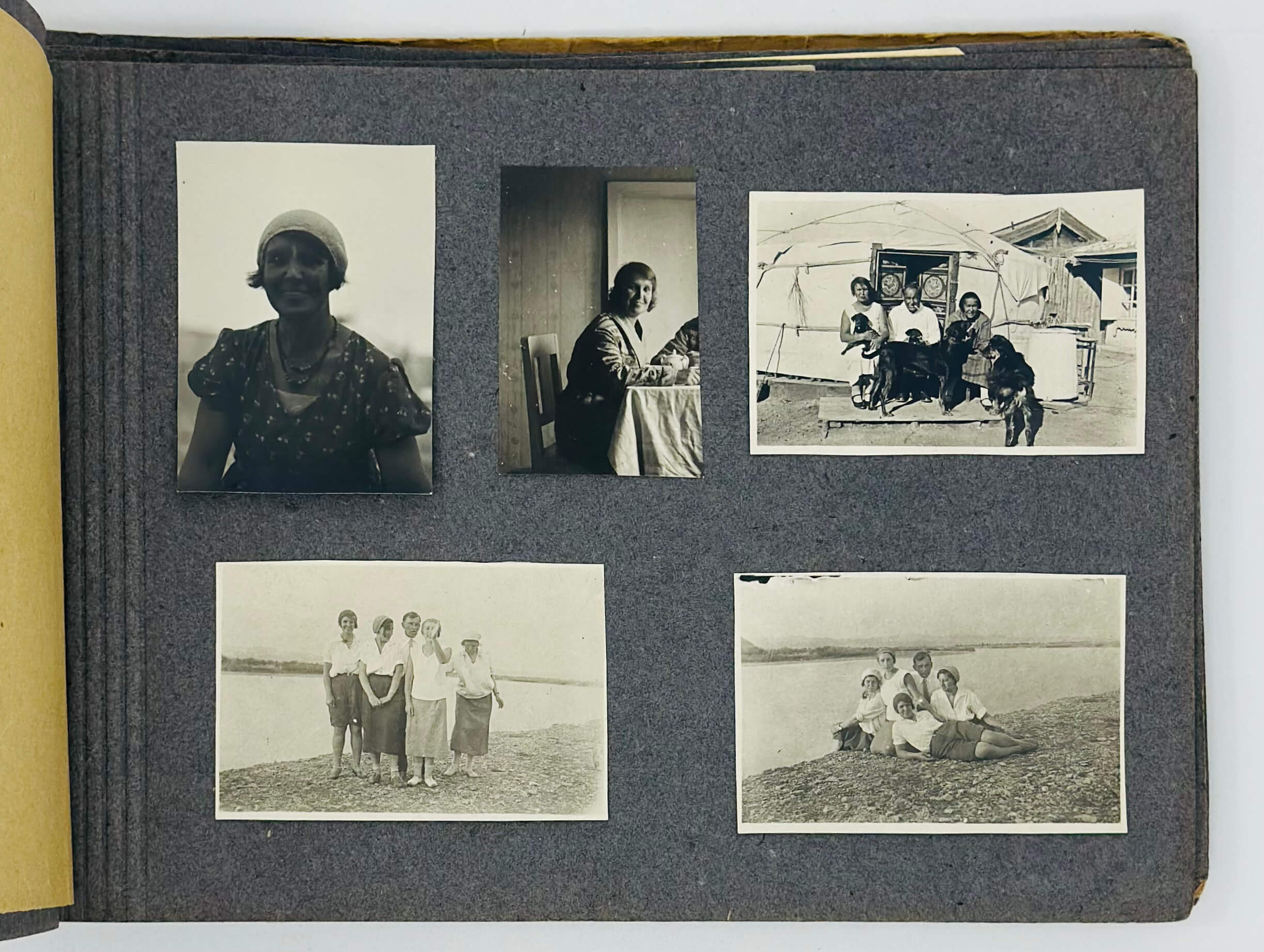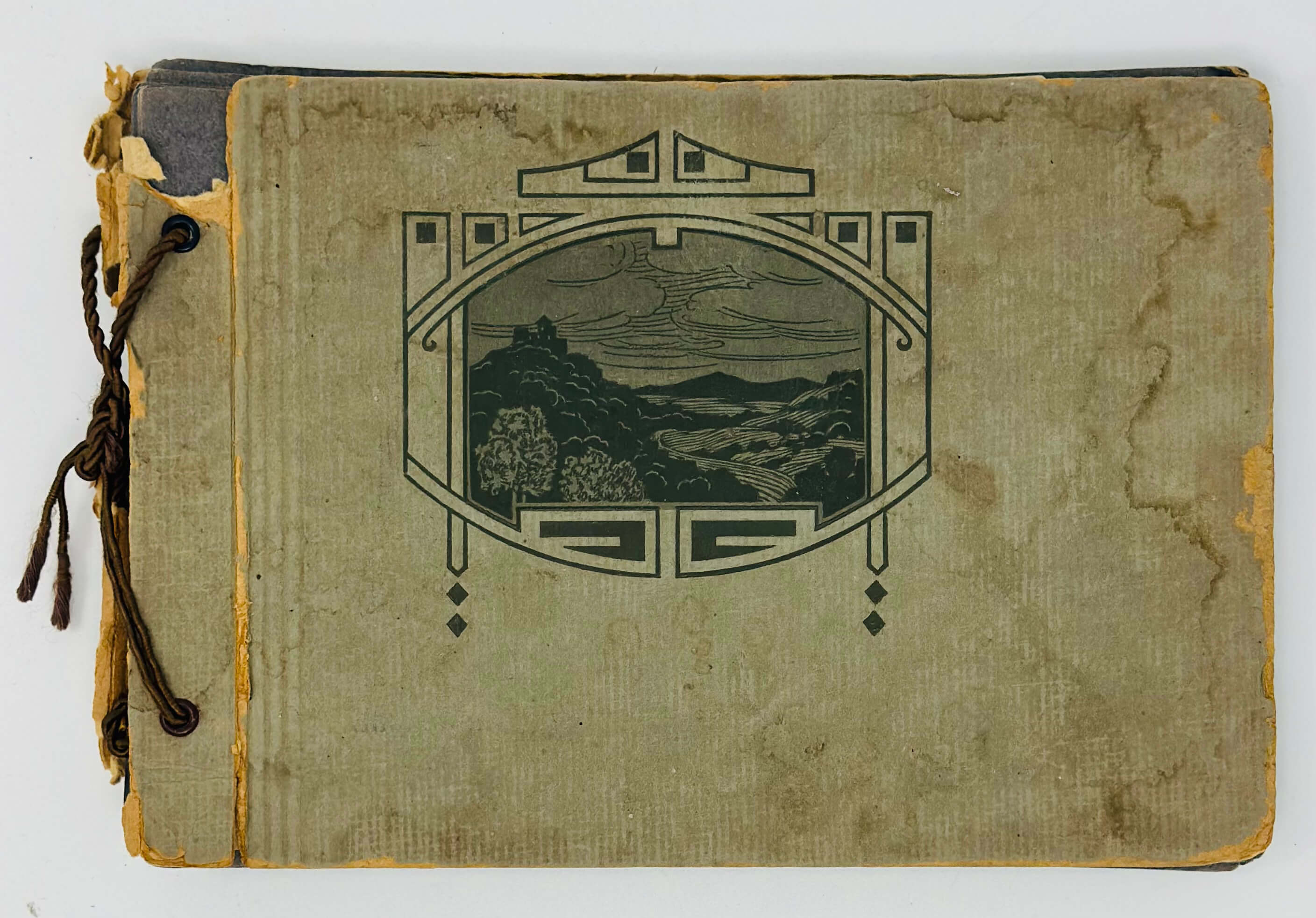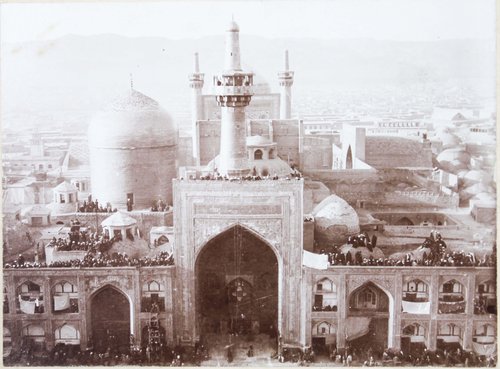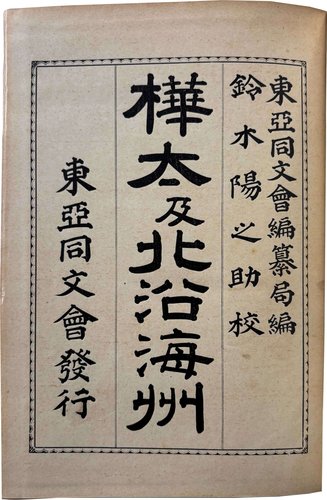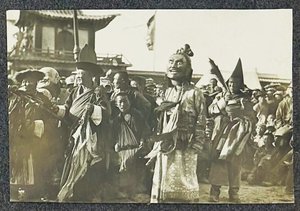
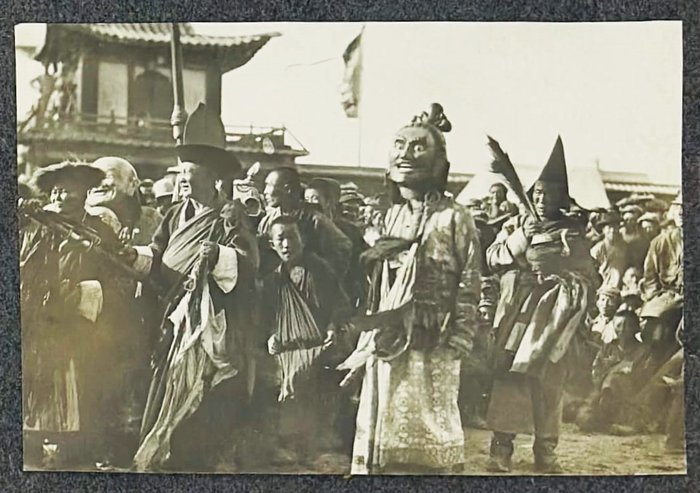
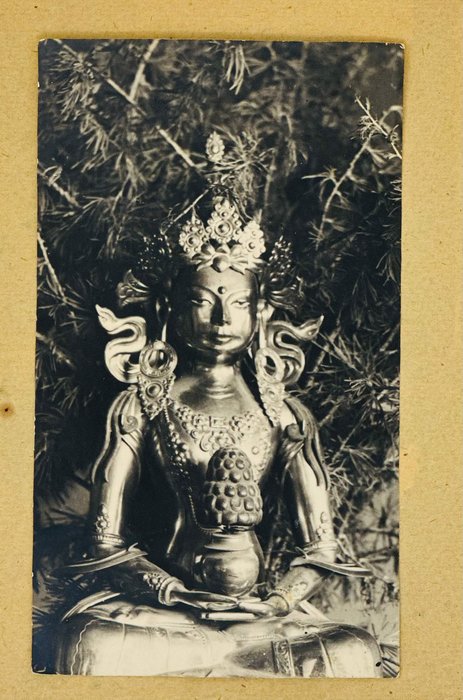
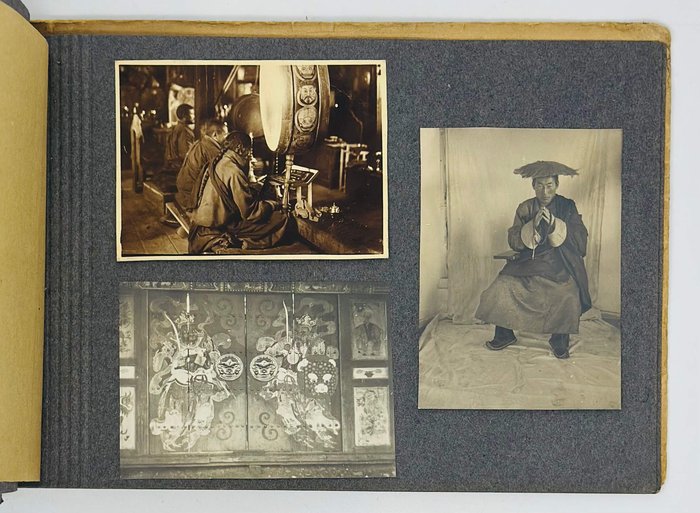
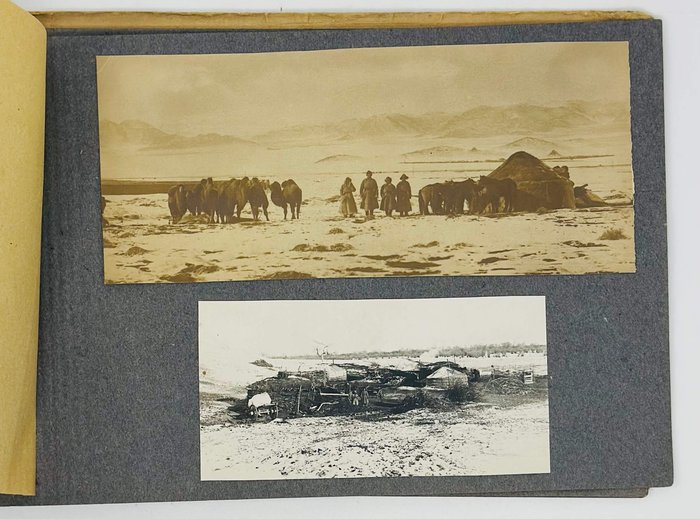
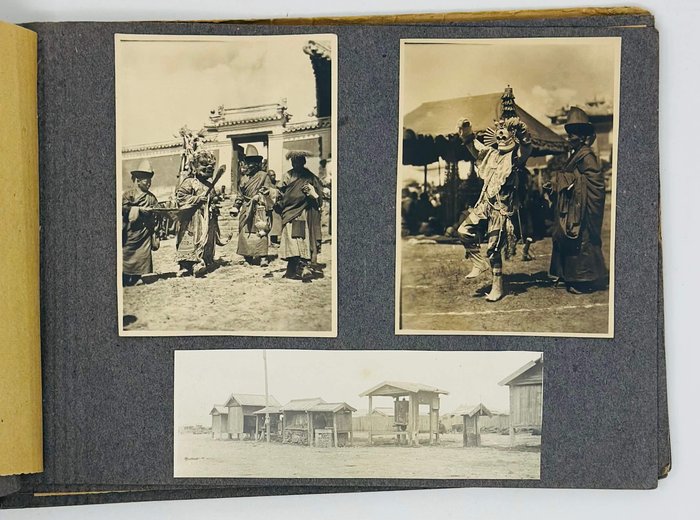
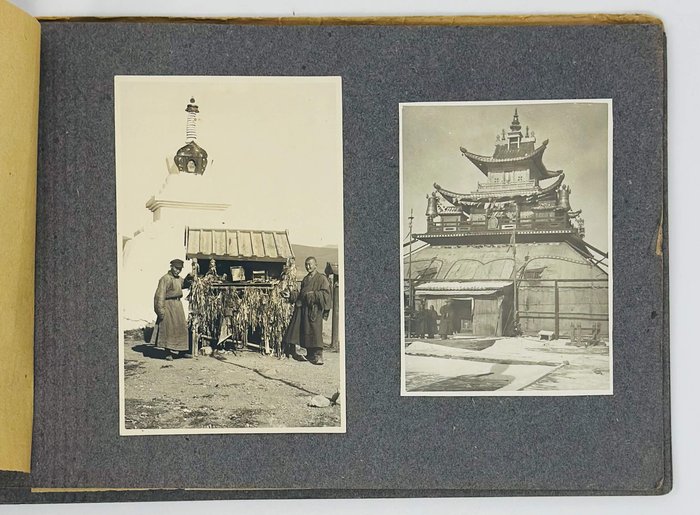
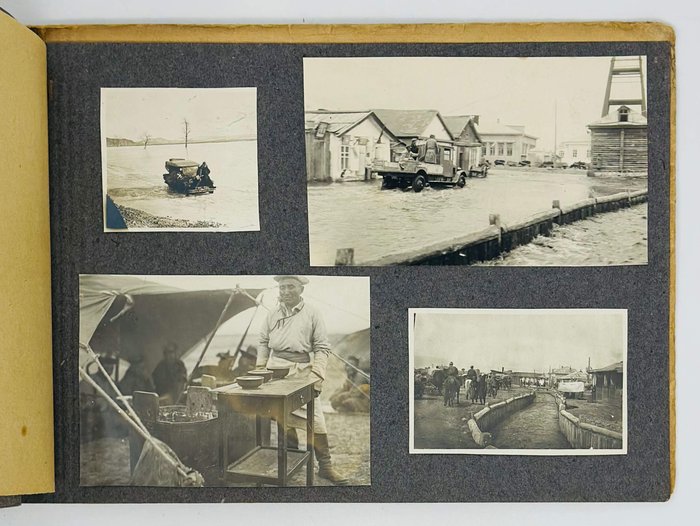

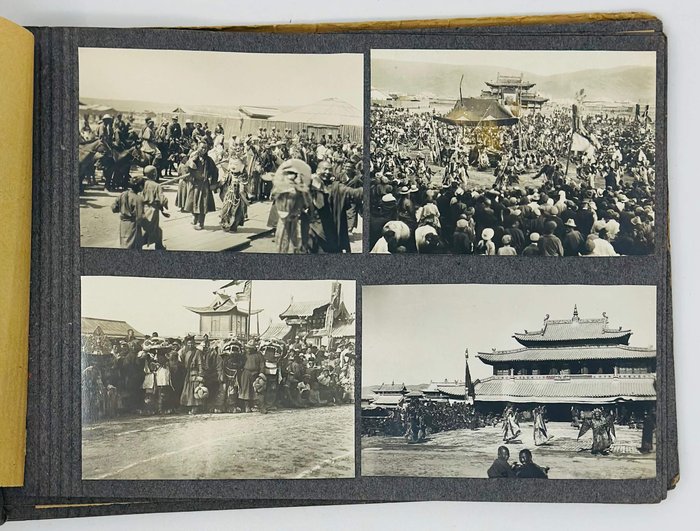

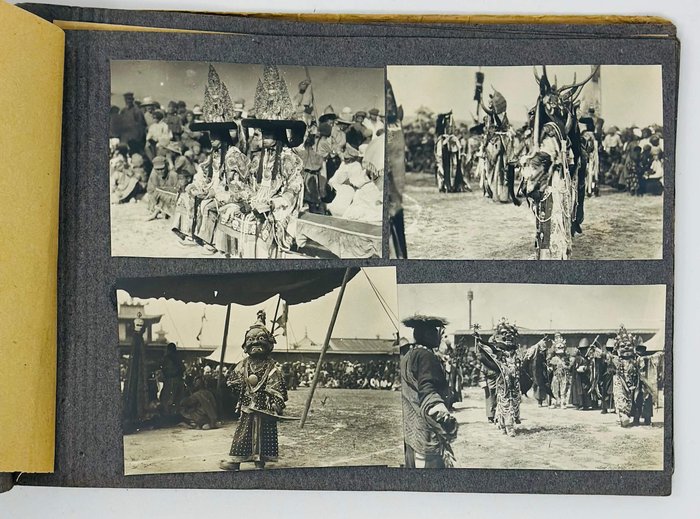
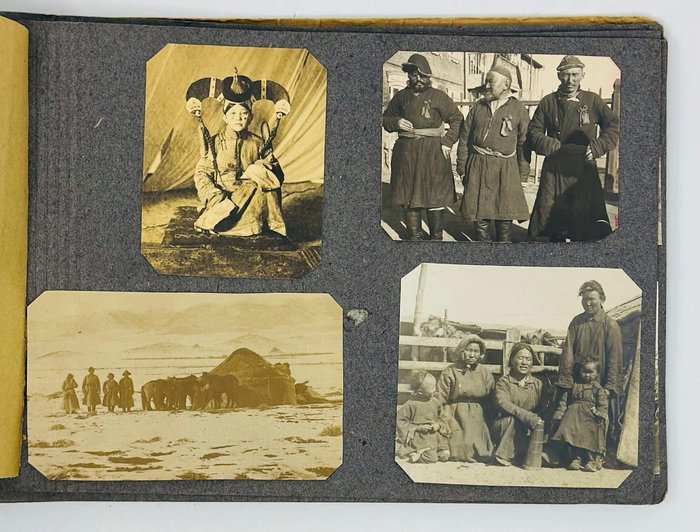

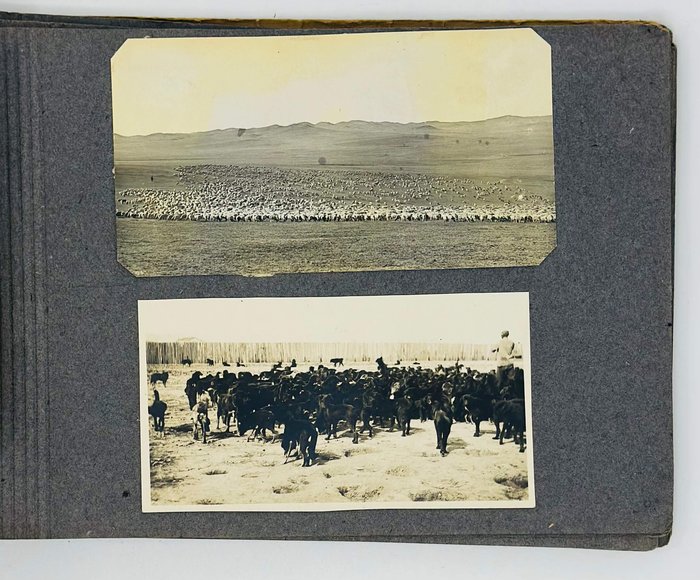
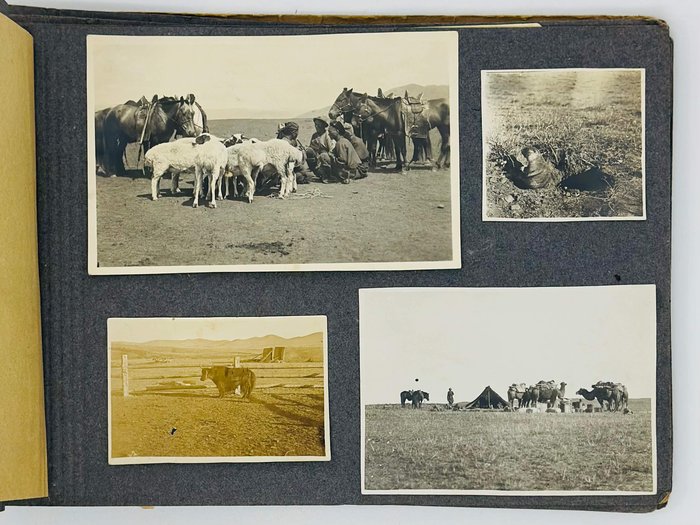
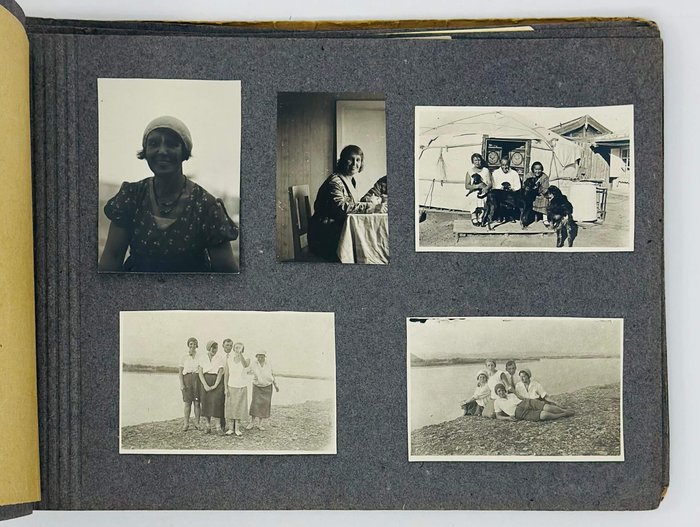
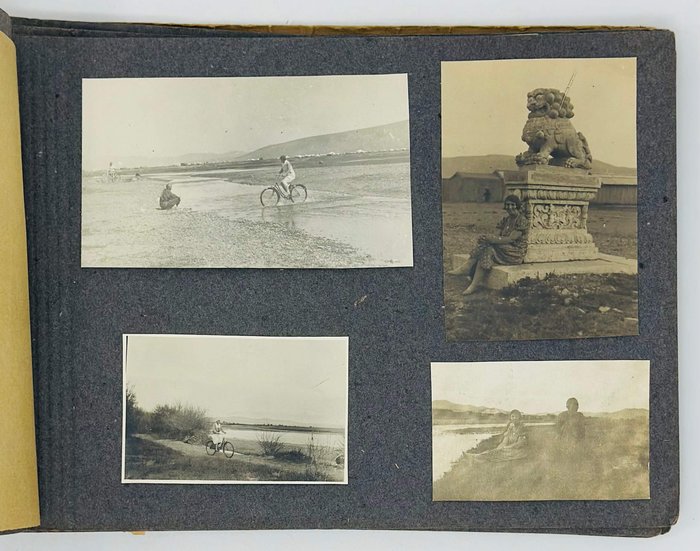
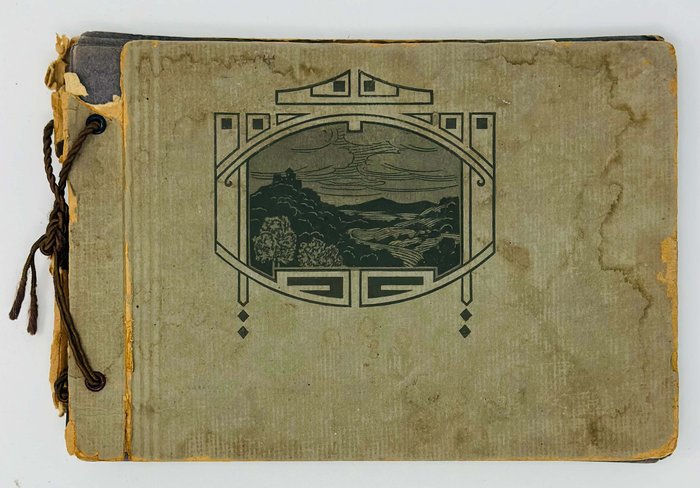
#P62
Ca. 1920s
Oblong Quarto album (ca. 18x26 cm or 7 x 10 ¼ in). 18 card stock leaves with tissue guards. With 62 gelatin silver photos (61 mounted, one loosely inserted), from ca. 8x14 cm (3 ¼ x 5 ½ in) to ca. 4x6,5 cm (1 ½ x 2 ½ in). No captions. Original illustrated papered hard covers, fastened with a string. Boards with water stains, minor cracks and losses, one photo previously removed from the album, but overall a very good album of strong interesting rare photos.
Attractive collection of original gelatin silver snapshot photos of Mongolia, taken and collected by a Russian female resident of Ulaanbaator, who most likely worked there on the official assignment of the Soviet government in the 1920s. The first two leaves contain the compiler’s portraits taken in various settings (riding a bike along a steppe stream, posing next to a traditional Chinese lion sculpture, at the entrance of a Mongolian yurt, &c.). One of the images shows her next to a house sign written in Russian and the traditional Mongolian script.
Very interesting is a series of fourteen photos from a Buddhist festival, which most likely took place on the grounds of the Yellow Palace or Dechingalav Temple – a former residence of the Mongolian theocratic ruler Bogd Khan (in power: 1911-19 and 1921-24). After the Mongolian Revolution (1921-1924), the Yellow Palace was shortly used for official ceremonies by the Communist government, but the entire complex was demolished in the late 1920s or early 1930s. Now, the site is occupied by the monuments and structures of Ulaanbaatar’s central point - Sükhbaatar Square. The photos in the album capture various moments of the festival with masked dancers, Buddhist clergymen and a crowd of spectators. One of the identified views of the Yellow Palace grounds shows the front entrance to the Dechingalav Temple. There are also views of Ulaanbaator with the Megzed Janraiseg Temple of the Gandantegchinlen Monastery in the background, reconstructed Sükhbaatar Square with the “Green-Domed theatre” (built in 1926 and burned in 1949, now space is occupied with the Mongolian Government palace), a Buddhist stupa (with a monk and a Communist activist), religious sculptures, a flooded city street, yurt camps, &c. Several portraits show Mongolian camel riders and herdsmen, families, political activists with bows (possibly, red) attached to the outer garments, a woman wearing a traditional horn-style headdress, Buddhist monks, and others.
Overall an interesting collection of rare original amateur photos of the early years of socialist Mongolia.
Ruled by Quing China since the end of the 17th century, Mongolia started its fight for independence during the 1911 Xinhai Revolution. After a tumultuous decade, when the country experienced a short-lived theocratic Bogd Khanate (1911-19 and 1921-24), Chinese occupation and the Mongolian Revolution of 1921, the Soviet Red Army assisted local revolutionaries in establishing socialistic Mongolian People’s Republic in 1924. The country’s capital, known to Europeans as Urga, was renamed Ulaanbaatar the same year. Throughout the 20th century, Mongolia developed under the heavy influence of the Soviet Union. China officially recognized Mongolian independence only in 1946.


